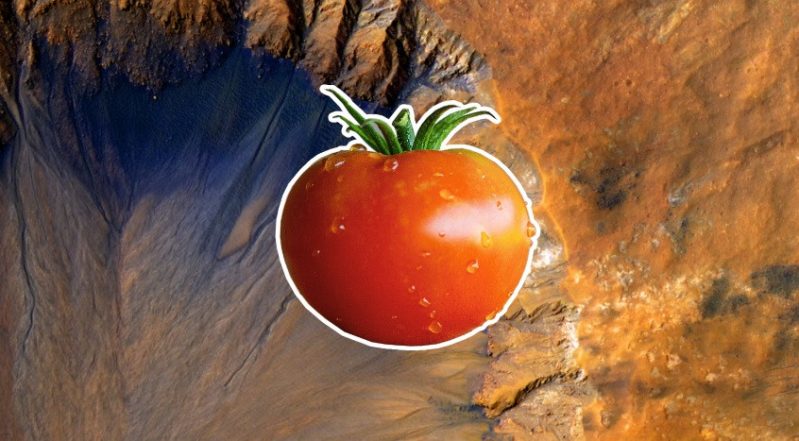A Long-Lost Tomato Was Found in Space After 8 Months

© NASA / Unsplash
Imagine losing something for months, only to have it suddenly reappear – but in space!
Well, that is the exact situation that astronauts recently found themselves in. But this time, they found a tomato in space.
In the vastness of space, where even tiny objects can disappear, a tomato managed to stay hidden for an astonishing 8 months on a space station.
But, how did this tomato manage to stay hidden for so long? What does this mean for future space missions?
A Tomato Was Found in Space After Being Lost for 8 Months
NASA astronaut Frank Rubio completed a record-breaking 371-day mission aboard the International Space Station. He orbited Earth approximately 5,936 times and traveled over 157 million miles. During his mission, he accidentally lost a small tomato.

Rubio participated in the ISS project VEG-05, studying the growth of red-robin tomatoes in space over 100 days. The inch-long tomatoes were harvested, but NASA restricted consumption due to fungal contamination risks.
During Rubio’s mission, his sample tomato drifted away in the microgravity environment. It remained undiscovered until his return after over a year in space.
The Announcement
ISS astronaut Jasmin Moghbeli announced during a Q&A session that the long-lost tomato from the VEG-05 experiment had been found onboard the space station. She clarified that Frank Rubio, who had been jokingly accused of eating the tomato, was not responsible.
However, Moghbeli did not disclose further details about who found the tomato or where exactly it was located, finally solving the mystery.
Why Was the Tomato in Space?
In October, Rubio recounted harvesting “the first tomato in space” and storing it in a Ziploc bag aboard the ISS. During an event with schoolkids, another astronaut took it out to show them. Rubio believed he had secured it with Velcro, but upon returning, the tomato had vanished.

Rubio spent “18 to 20 hours” searching the vast expanse of the ISS, equivalent to a six-bedroom house, for the missing tomato. He expressed hope that someone would eventually discover it, a shriveled remnant in a Ziploc bag—thus proving he did not consume it during his time in space.
How Do Astronauts Find Things in Space?
NASA astronomers use a variety of telescopes both in space and on the ground to observe stars, planets, and galaxies. Each telescope captures different wavelengths of light and employs unique techniques, collectively enhancing our understanding of cosmic phenomena. They are the following:
- Since its launch in 1990, the Hubble Space Telescope has revolutionized our understanding of the universe by capturing images of stars, planets, and galaxies while orbiting Earth at 17,000 mph.
- The Spitzer Space Telescope, launched in 2003, specializes in detecting heat or infrared radiation. It reveals cosmic phenomena hidden from optical telescopes, such as dusty stellar nurseries, galactic centers, and forming planetary systems. Spitzer’s infrared capabilities also uncover cooler objects like brown dwarfs, exoplanets, and organic molecules relevant to the search for extraterrestrial life.
- The Chandra X-ray Observatory provides scientists with X-ray images of exotic celestial environments, aiding in the study of the universe’s structure and evolution. It detects X-rays emitted from matter heated to millions of degrees, offering insights into phenomena like stellar explosions and matter swirling near black holes.
What do you think of the finding of the tomato in space?
You might also want to read: Reproduction in Space: Is Growing Mouse Embryos Possible?


